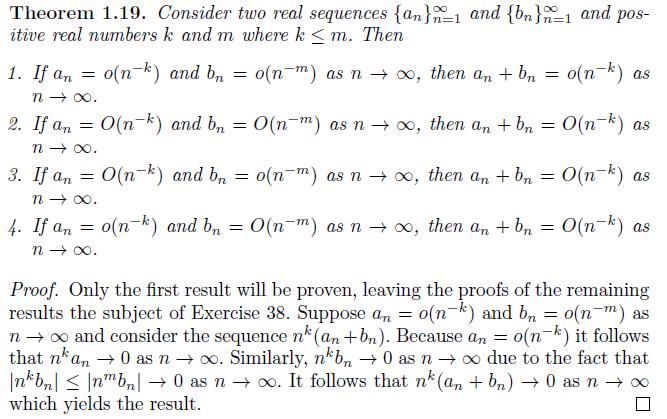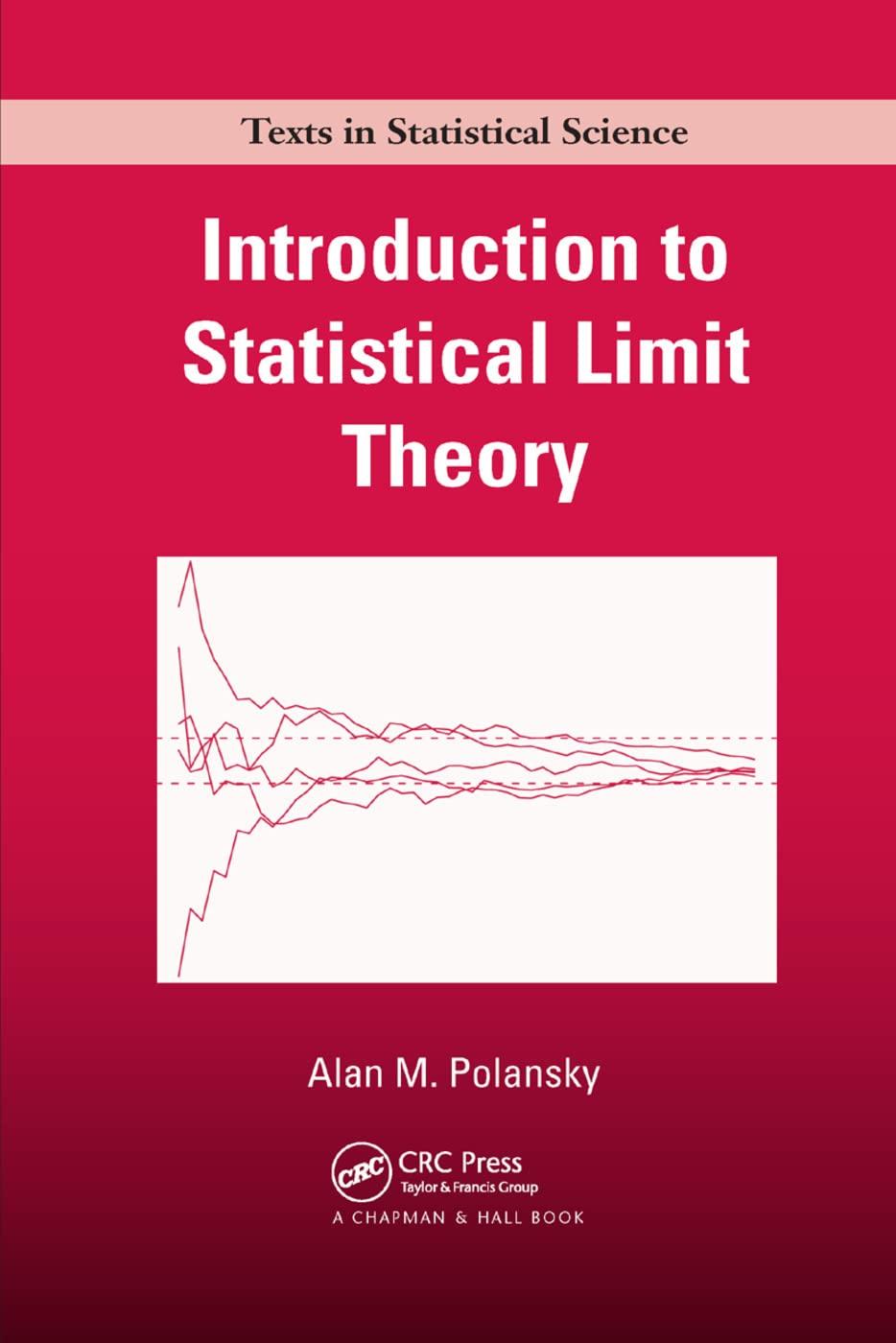Prove the remaining three results of Theorem 1.19. That is, consider two real sequences (left{a_{n}ight}_{n=1}^{infty}) and (left{b_{n}ight}_{n=1}^{infty})
Question:
Prove the remaining three results of Theorem 1.19. That is, consider two real sequences \(\left\{a_{n}ight\}_{n=1}^{\infty}\) and \(\left\{b_{n}ight\}_{n=1}^{\infty}\) and positive integers \(k\) and \(m\) where \(k \leq m\). Then
a. Suppose \(a_{n}=O\left(n^{-k}ight)\) and \(b_{n}=O\left(n^{-m}ight)\) as \(n ightarrow \infty\). Then prove that \(a_{n}+b_{n}=O\left(n^{-k}ight)\) as \(n ightarrow \infty\).
b. Suppose \(a_{n}=O\left(n^{-k}ight)\) and \(b_{n}=o\left(n^{-m}ight)\) as \(n ightarrow \infty\). Then prove that \(a_{n}+b_{n}=O\left(n^{-k}ight)\) as \(n ightarrow \infty\).
c. Suppose \(a_{n}=o\left(n^{-k}ight)\) and \(b_{n}=O\left(n^{-m}ight)\) as \(n ightarrow \infty\). Then prove that \(a_{n}+b_{n}=O\left(n^{-k}ight)\) as \(n ightarrow \infty\).

Step by Step Answer:






